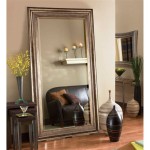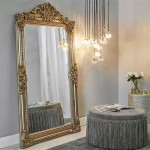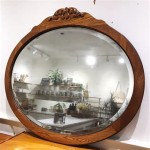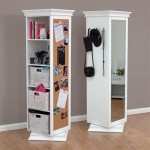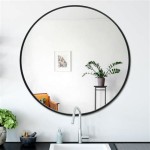How to Hang a Heavy Mirror on a Gyprock Wall
Gyprock, also known as drywall, is a common wall material used in many homes. While it offers affordability and ease of installation, it can also be susceptible to damage when hanging heavy objects. A heavy mirror, especially one with a large surface area, can pose a significant challenge, as the weight could easily pull the drywall away from the wall stud if not secured properly. This article provides a comprehensive guide on how to hang a heavy mirror on a gyprock wall safely and securely.
1. Determine the Location and Assess the Wall
Before starting the installation, it is crucial to carefully assess the location and the condition of the gyprock wall. This will ensure that the mirror is hung in a suitable position and that the mounting hardware will be adequately supported.
First, choose the desired location for the mirror. Consider factors such as available space, wall décor, and the overall aesthetics of the room. Once you have selected the location, use a stud finder to locate the wall studs behind the drywall. Wall studs provide the most robust support for hanging heavy objects. Ideally, you want to find at least two studs that will be able to support the weight of the mirror. Mark the stud locations on the wall with a pencil.
Next, check the condition of the drywall. If the drywall is noticeably damaged, cracked, or weak, it may be necessary to reinforce the area before hanging the mirror. This might involve using a patching compound to repair any cracks or adding additional support with wood blocking behind the drywall.
2. Choose the Right Hanging Hardware
The choice of hanging hardware is critical for ensuring the mirror’s stability and preventing it from falling. Different types of hardware are available, each offering varying levels of weight capacity and suitability for different applications. The weight of the mirror and the type of wall will be the determining factors for selecting the appropriate hardware.
For heavy mirrors, the most reliable option is using heavy-duty toggle bolts. These bolts are specifically designed for hanging heavy objects on hollow wall surfaces, such as gyprock. They consist of a bolt with a spring-loaded butterfly-shaped wing that expands behind the drywall once the bolt is tightened. This creates a secure anchor point that can handle significant weight.
Alternatively, if the mirror is relatively lightweight or if the wall is reinforced with wood blocking, you can use heavy-duty drywall anchors. These anchors come in various sizes and are designed to expand within the drywall, providing a secure anchor point for screws.
For extremely heavy mirrors, especially those exceeding 100 pounds (45 kg), it is strongly recommended to seek professional assistance from a qualified contractor or an experienced handyman. They can assess the wall structure and recommend appropriate hardware and installation techniques to ensure the mirror's secure attachment.
3. Install the Mounting Hardware and Securely Hang the Mirror
Once you have chosen the appropriate hardware, it is time to install it on the wall and hang the mirror. This step requires careful attention to detail to ensure the mirror is hung securely and will remain safely in place.
Using a drill bit slightly smaller than the diameter of the toggle bolt or drywall anchor, drill pilot holes at the marked locations. The depth of the pilot holes should be sufficient to accommodate the length of the chosen hardware. Insert the toggle bolts or drywall anchors into the pilot holes and gently tap them in with a hammer until they are flush with the wall. Ensure the anchor is fully inserted into the wall cavity for a secure connection.
Once the mounting hardware is installed, you can begin to hang the mirror. If the mirror is equipped with D-rings or wire hangers, attach these to the back of the mirror using screws or other suitable fasteners. The placement of the D-rings or wire hangers should be designed to align with the position of the installed hardware. Carefully lift the mirror into position and align it with the hanging hardware. Attach the D-rings or wire hangers to the toggle bolts or drywall anchors. Ensure that the mirror is level and secure before releasing your hold.
To finish the installation, use a level to ensure the mirror is hanging straight. Use a screwdriver or wrench to tighten the toggle bolts or drywall anchors further to secure the mirror in place. If the mirror is particularly heavy, it may be beneficial to use a second person to assist with lifting and securing the mirror. To add extra security, consider applying a dab of silicone adhesive to the wall behind the mirror to prevent any potential movement.
Following these steps carefully will help ensure the mirror is securely mounted and remains safely in place for years to come. Always remember to prioritize safety during the installation process. If you have any doubts about your ability to complete the task safely, it is best to seek professional assistance from a qualified contractor.

How To Hang A Very Heavy Picture Or Mirror The Best

How To Hang A Large Or Heavy Mirror
How To Hang A 100 Pound Mirror On Drywall Quora

How To Hang A Very Heavy Picture Or Mirror The Best

How To Hang A Heavy Mirror Onto Gyproc Bunnings Work Community

How To Hang A 31kg Mirror On Wall With Bunnings Work Community

How To Hang A Heavy Mirror

Hang A Mirror On Plasterboard Wall Soraya Interiors

How To Hang A Very Heavy Picture Or Mirror The Best

How To Hang A Mirror On Plasterboard Wall Soraya Interiors

